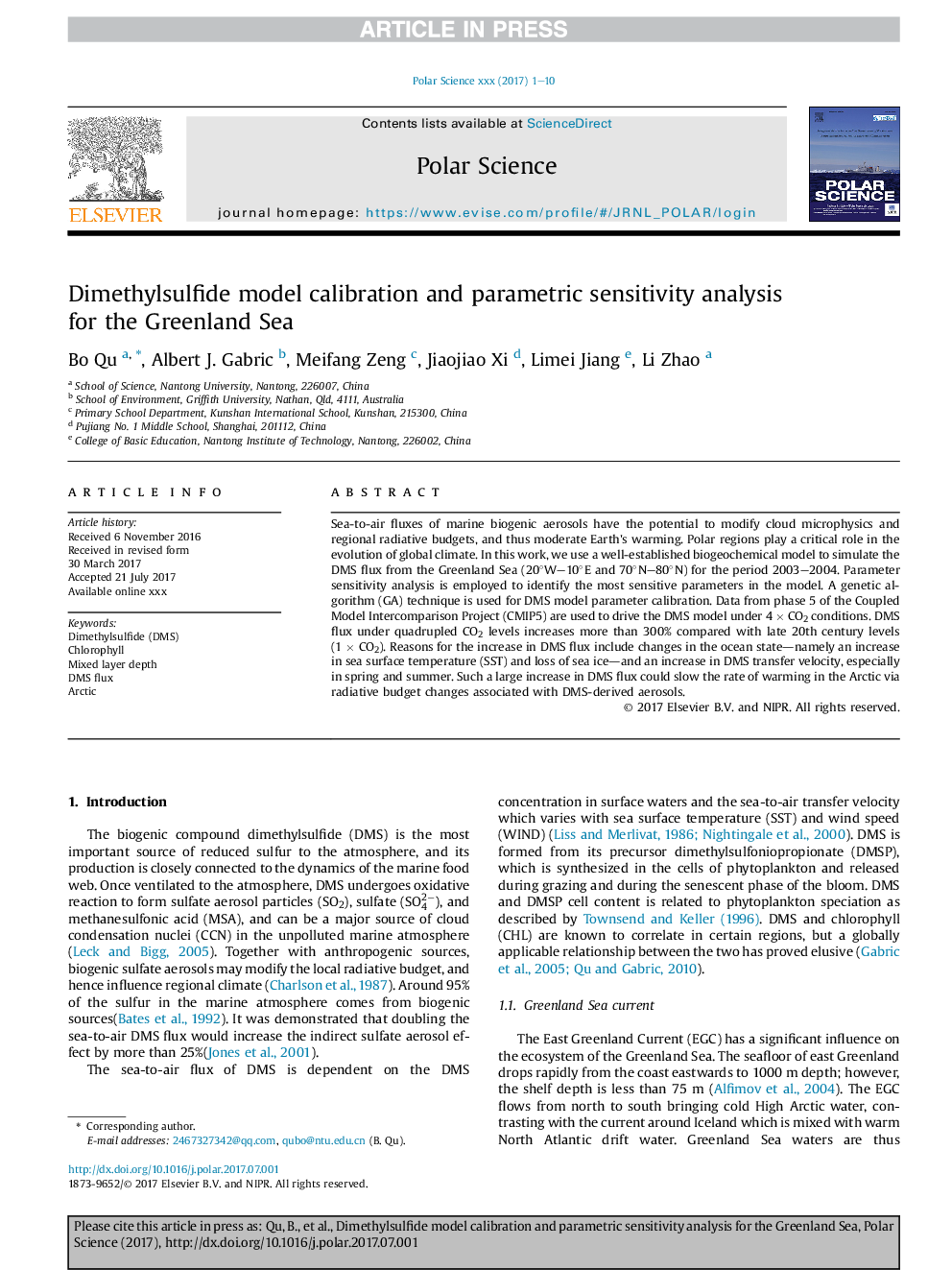| Article ID | Journal | Published Year | Pages | File Type |
|---|---|---|---|---|
| 5780536 | Polar Science | 2017 | 10 Pages |
Abstract
Sea-to-air fluxes of marine biogenic aerosols have the potential to modify cloud microphysics and regional radiative budgets, and thus moderate Earth's warming. Polar regions play a critical role in the evolution of global climate. In this work, we use a well-established biogeochemical model to simulate the DMS flux from the Greenland Sea (20°W-10°E and 70°N-80°N) for the period 2003-2004. Parameter sensitivity analysis is employed to identify the most sensitive parameters in the model. A genetic algorithm (GA) technique is used for DMS model parameter calibration. Data from phase 5 of the Coupled Model Intercomparison Project (CMIP5) are used to drive the DMS model under 4 Ã CO2 conditions. DMS flux under quadrupled CO2 levels increases more than 300% compared with late 20th century levels (1 Ã CO2). Reasons for the increase in DMS flux include changes in the ocean state-namely an increase in sea surface temperature (SST) and loss of sea ice-and an increase in DMS transfer velocity, especially in spring and summer. Such a large increase in DMS flux could slow the rate of warming in the Arctic via radiative budget changes associated with DMS-derived aerosols.
Related Topics
Physical Sciences and Engineering
Earth and Planetary Sciences
Earth and Planetary Sciences (General)
Authors
Bo Qu, Albert J. Gabric, Meifang Zeng, Jiaojiao Xi, Limei Jiang, Li Zhao,
